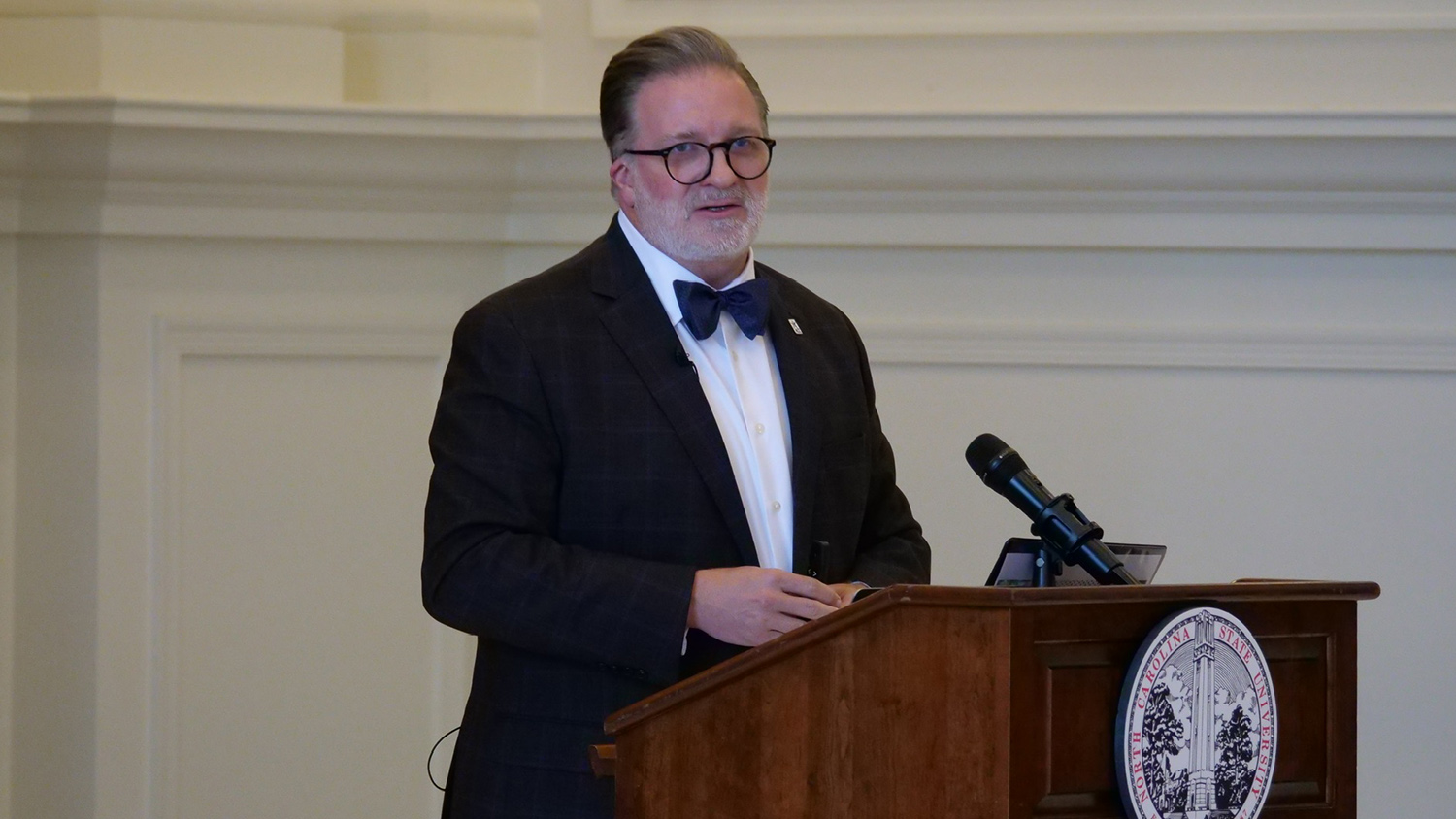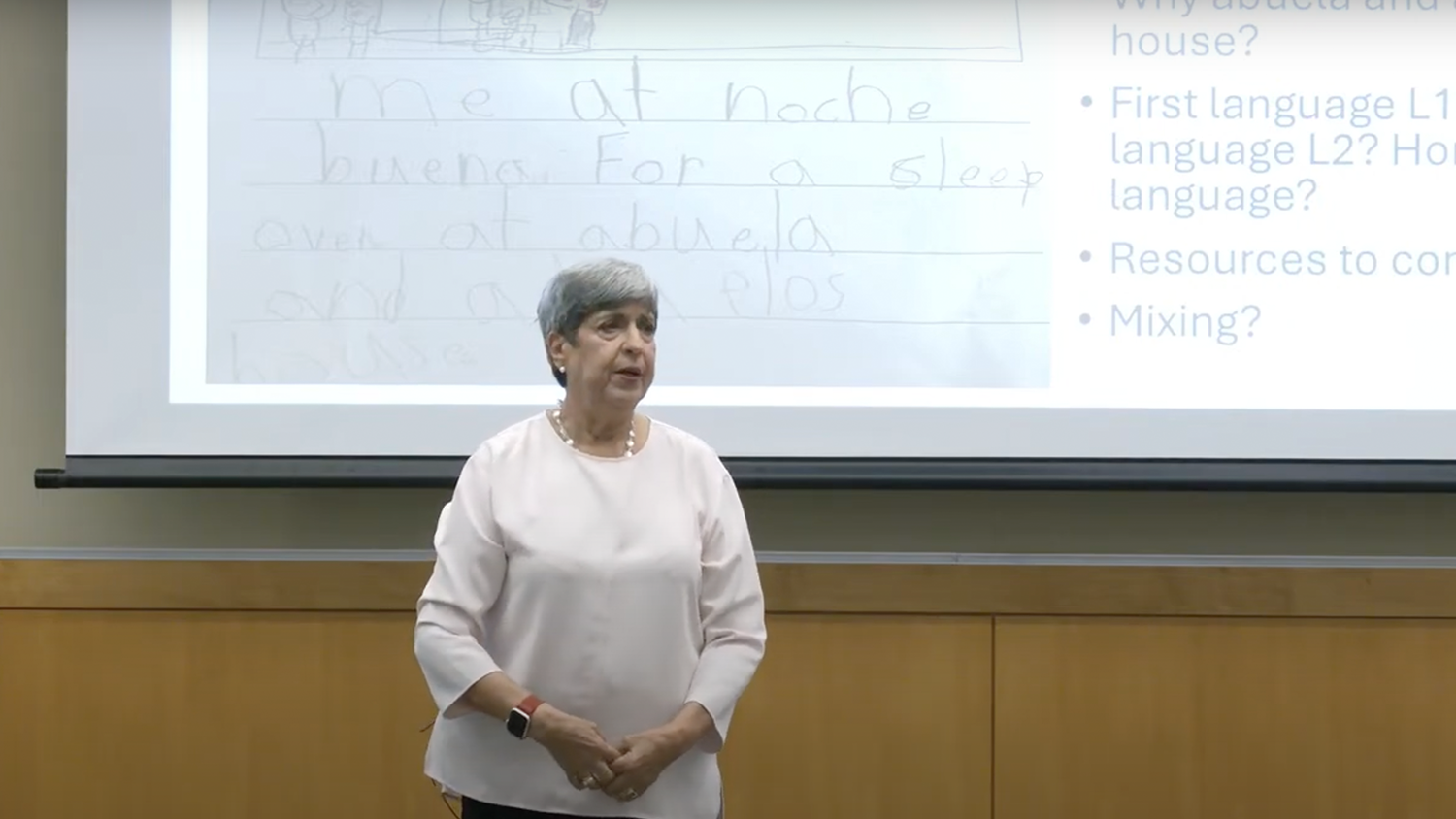Friday Institute Partnership with Sampson County Schools Brings Data-Rich Activities and Resources Into Classrooms

Every day, people are inundated with data. With the ease of information sharing in social media and news stories, using data to make informed decisions becomes increasingly important. A team of statistics educators and researchers in the Hub for Innovation and Research in Statistics Education (HI-RiSE) at the Friday Institute for Educational Innovation and the NC State College of Education recently worked with Sampson County Schools (SCS) teachers across disciplines to incorporate data into their classroom practices and help students understand how to critically analyze scientific phenomena and make evidence-based decisions.
“This was a result of our district improvement plan and long-term STEM planning with efforts to increase capacity in our schools and classrooms,” said Lori Monk, instructional technology facilitator for SCS. “Resources such as computers and other end-user devices continue to be a problem for SCS, as our funding ranks 110 out of 115 for local funding. We are currently building resources, such as robots, engineering kits, etc., at our STEM lab for teacher checkout and usage. Embedded STEM lessons continue to be a struggle for some teachers, in relationship to the curriculum.”
The HI-RiSE team’s main goal with this partnership was to support SCS teachers to integrate data-rich activities into their existing curriculum and find resources that could engage those from all grades and disciplines. These K-12 educators attended a recent session the team conducted and represented subjects from language arts and science to math and family and consumer science.
“In general, it’s really important to be data literate,” said Gemma Mojica, Ph.D., research scholar at the Friday Institute. “You use data to make decisions. If people are making claims, it’s important that individuals have the skills to evaluate whether or not these claims are true. You want individuals to have the ability to be a bit of a skeptic and question the trustworthiness of the claim, and ask, ‘Is there evidence to support this claim based on data?’ ”
People who know how to work with data are in demand too. In the last four years, “data scientist” has topped Glassdoor’s list of best jobs in America and LinkedIn has listed it as one of its most promising jobs, but the fields that use it are varied. From manufacturing to marketing, those with strong data analysis skills are coveted in various industries.
With its relevance to the real world and future jobs, engaging students in data and statistical analysis is important, but also it can be very rewarding.
“Data shows that incorporating real world issues/problems into our lessons helps to build resilience, teamwork, problem solving, technology use and more in our students and teachers,” said Monk. “Students have increased engagement when real world problems are being solved, and they feel like they are working toward a realistic goal.”
During a recent session, members of the HI-RiSE team engaged SCS educators in research-based activities they developed as well as ready-to use resources. Using a free online data analysis tool called CODAP, teachers investigated large datasets involving cereal nutrition and physical attributes about the design of roller coasters. Also, they learned about ready-to-use resources including What’s Going On In This Graph?, a free online weekly feature from the American Statistical Association and New York Times Learning Network; Desmos, an online graphing calculator and software that has partnered with the New York Times to provide digital activities; and Gapminder to help build statistical reasoning about complex multivariate data.
Improving Statistics Education and Data Literacy
Supplemental resources are needed in classrooms because the current state of statistics instruction is lacking in schools, according to Mojica.
“We have to find opportunities across disciplines to build statistical reasoning,” Mojica said. “If we leave it to just what happens in math class, it’s not enough. Statistics historically is usually taught within a math curriculum, often by people trained as math teachers who might not have experience in statistics.”
Hollylynne Lee, Ph.D., Friday Institute senior faculty fellow and NC State College of Education professor of mathematics and statistics education, leads the HI-RiSE team and said in a previous interview that “time limitations, classroom resources and teacher confidence often serve as barriers to educators attempting to teach in-depth statistical content within a crowded mathematics curriculum.” According to Lee, research shows that teachers are less confident when it comes to teaching statistics and in turn, statistics lessons are left to the end of the year or tied in with other units.
[spotlight-box label=”” img=”” heading=”Friday Institute for Educational Innovation” cta=”” url=””]The Friday Institute brings together researchers, practitioners and policymakers to lead the transition to next-generation education systems that will prepare students for success in the digital-age world. It conducts research, develops educational resources, provides professional development programs for educators, advocates to improve teaching and learning, and helps inform policy-making. The Friday Institute is a part of the NC State College of Education. Visit fi.ncsu.edu to learn more.[/spotlight-box]
“Creating data-literate citizens requires an effort across all disciplines to emphasize the process of learning from data,” Lee said, “whether that data comes in the form of social media texts or quantitative measures collected about a real world phenomena like the nutritional information about our choices of breakfast foods. The HI-RiSE team is ready to assist teachers, schools and districts like Sampson County in making data-based decision making a priority skill for their 21st century learners.”
The HI-RiSE team aims to “help create positive, effective statistics and data education environments” by providing and developing open resources for educators to improve their expertise in statistics education. Their current work includes the Writing Data Stories project that is integrating data-intensive curriculum into middle school science classrooms, the ESTEEM project that creates free online modules on learning to teach statistics for use in undergraduate mathematics teacher preparation, the InSTEP project that is creating an innovative personalized online professional development platform for teachers in grades 6-12 to invigorate their teaching of statistics and data, and the DICE project, which includes a freely available web-based assessment system that provides teachers with actionable feedback about student’s probability reasoning.
A Learning Opportunity for All
In addition to helping SCS educators, this partnership has also provided NC State College of Education graduate students with the opportunity to learn.
“This professional development was a great opportunity for me to expand my bubble and interact with a set of teachers that I don’t typically get to interact with as often,” said Taylor Harrison, a HI-RiSE graduate research assistant, Ph.D. candidate in Learning and Teaching in STEM program area of study in mathematics and statistics education, and an NC State provost scholar-leader doctoral fellow. “We had teachers across all grade levels and across all subjects at multiple schools, so it prompted us to think about how to effectively engage a wide audience of teachers simultaneously.”
Harrison’s teammate David Stokes, also a HI-RiSE graduate research assistant and a Ph.D. student in Learning and Teaching in STEM program area of study in mathematics and statistics education, saw this partnership as an opportunity to grow as an organizer and presenter.
“The importance of collaboration and building in flexibility into the planning process is an additional aspect that I will incorporate into my future PD opportunities,” Stokes said.
Additionally, the impact of the professional development in Sampson County has extended beyond just the teachers in attendance.
“The group that attended this session was very impressed with the presentation and resources they were provided by the Friday Institute team,” Monk said. “I witnessed one teacher who attended the training presenting to her colleagues at a staff meeting recently. She shared information she learned from the team, including resources such as CODAP. She shared with her peers the importance of incorporating/embedding practices into what they are already doing that will have huge impacts on student learning and engagement.”
This article was originally posted on the Friday Institute for Educational Innovation website.
- Categories:


